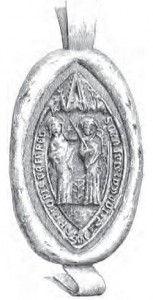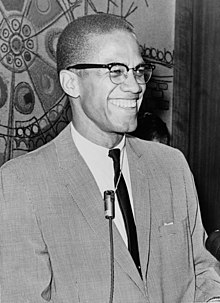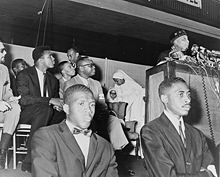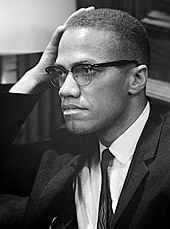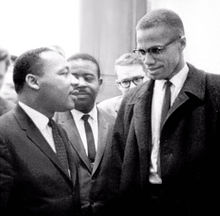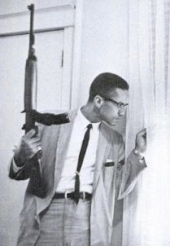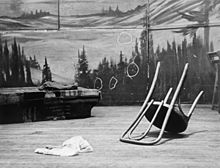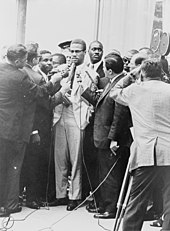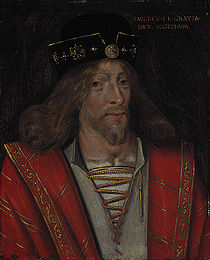 On this day in 1437, James
On this day in 1437, James I, King of Scots, was assassinated in a failed coup by his kinsman and former ally Walter Stewart, Earl of Atholl, at the Blackfriars monastery on the outskirts of Perth, Scotland. Born in Dunfermline Palace about July 1394; the son of Robert III of Scotland and Annabella Drummond. On 4 April 1406 Robert III died and the 12 year old prince became the uncrowned king of Scots. James was crowned on 21 May 1424. He ruled with a firm hand, achieving numerous legal and financial reforms, including remodeling the Scottish parliament after its English counterpart, and renewing the Auld Alliance with France. His actions, although very effective, upset many, namely the descendents of his grandfather, Robert II‘s second marriage (James was descended from the first marriage). Conflict arose between the two factions over who should be on the throne. The main conspirators in the regicide, Walter of Atholl, his grandson Robert Stewart and Robert Graham were executed. James was married to Joan Beaufort. James was succeeded on the throne by his son James II. A king named James would rule Scotland for 136 years through James I’s descendents; James II through James V. James V was succeeded by his only surviving legitimate child, Mary, Queen of Scots. Mary would be succeeded by the final James, her son James I of England, James VI, King of Scots. In My Defens, God Me Defend!
I, King of Scots, was assassinated in a failed coup by his kinsman and former ally Walter Stewart, Earl of Atholl, at the Blackfriars monastery on the outskirts of Perth, Scotland. Born in Dunfermline Palace about July 1394; the son of Robert III of Scotland and Annabella Drummond. On 4 April 1406 Robert III died and the 12 year old prince became the uncrowned king of Scots. James was crowned on 21 May 1424. He ruled with a firm hand, achieving numerous legal and financial reforms, including remodeling the Scottish parliament after its English counterpart, and renewing the Auld Alliance with France. His actions, although very effective, upset many, namely the descendents of his grandfather, Robert II‘s second marriage (James was descended from the first marriage). Conflict arose between the two factions over who should be on the throne. The main conspirators in the regicide, Walter of Atholl, his grandson Robert Stewart and Robert Graham were executed. James was married to Joan Beaufort. James was succeeded on the throne by his son James II. A king named James would rule Scotland for 136 years through James I’s descendents; James II through James V. James V was succeeded by his only surviving legitimate child, Mary, Queen of Scots. Mary would be succeeded by the final James, her son James I of England, James VI, King of Scots. In My Defens, God Me Defend!
The Final Footprint – James is interred in the ruins at Perth Charterhouse or Perth Priory, known in Latin as Domus Vallis Virtutis (“House of the Valley of Virtue”), a monastic house of Carthusian monks based at Perth.
#RIP #OTD in 1894 painter who was a member and patron of the Impressionists Gustave Caillebotte died of pulmonary congestion while working in his garden at Petit-Gennevilliers in 1894 at age 45. Père Lachaise Cemetery in Paris
| Malcolm X | |
|---|---|
On this day in 1965, African-American Muslim minister and human rights activist Malcolm X was assassinated by gunshots in Manhattan’s Audubon Ballroom at the age of 39. Born Malcolm Little on 19 May 1925 in Omaha, Nebraska. To his admirers he was a courageous advocate for the rights of blacks, a man who indicted white America in the harshest terms for its crimes against black Americans; detractors accused him of preaching racism and violence. In my opinion, one of the greatest and most influential African Americans in history.
His father was killed when he was six and his mother was placed in a mental hospital when he was thirteen, after which he lived in a series of foster homes. In 1946, at age twenty, he went to prison for larceny and breaking and entering. While in prison, he became a member of the Nation of Islam (NOI), changing his birth name to Malcolm X. After his parole in 1952 he quickly rose to become one of the organization’s most influential leaders, serving as the public face of the controversial group for a dozen years. In his autobiography, Malcolm X wrote proudly of some of the social achievements the Nation made while he was a member, particularly its free drug rehabilitation program. The Nation promoted black supremacy, advocated the separation of black and white Americans, and rejected the civil rights movement for its emphasis on integration.
By March 1964, Malcolm X had grown disillusioned with the Nation of Islam and its leader Elijah Muhammad. Expressing many regrets about his time with them, which he had come to regard as largely wasted, he embraced Sunni Islam. After a period of travel in Africa and the Middle East, which included completing the Hajj, he also became known as el-Hajj Malik el-Shabazz. He repudiated the Nation of Islam, disavowed racism and founded Muslim Mosque, Inc. and the Organization of Afro-American Unity. He continued to emphasize Pan-Africanism, black self-determination, and black self-defense.
In 1955, Betty Sanders met Malcolm X after one of his lectures, then again at a dinner party; soon she was regularly attending his lectures. In 1956 she joined the Nation of Islam, changing her name to Betty X. One-on-one dates were contrary to the Nation’s teachings, so the couple courted at social events with dozens or hundreds of others, and Malcolm X made a point of inviting her on the frequent group visits he led to New York City’s museums and libraries.
Malcolm X proposed during a telephone call from Detroit in January 1958, and they married two days later.
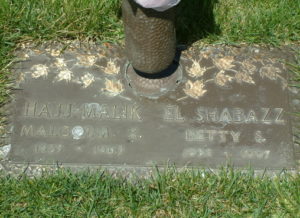 The Final Footprint
The Final Footprint
The public viewing, February 23–26 at Unity Funeral Home in Harlem, was attended by some 14,000 to 30,000 mourners. For the funeral on February 27, loudspeakers were set up for the overflow crowd outside Harlem’s thousand-seat Faith Temple of the Church of God in Christ, and a local television station carried the service live.
Actor and activist Ossie Davis delivered the eulogy, describing Malcolm X as “our shining black prince … who didn’t hesitate to die, because he loved us so”:
There are those who will consider it their duty, as friends of the Negro people, to tell us to revile him, to flee, even from the presence of his memory, to save ourselves by writing him out of the history of our turbulent times. Many will ask what Harlem finds to honor in this stormy, controversial and bold young captain—and we will smile. Many will say turn away—away from this man, for he is not a man but a demon, a monster, a subverter and an enemy of the black man—and we will smile. They will say that he is of hate—a fanatic, a racist—who can only bring evil to the cause for which you struggle! And we will answer and say to them: Did you ever talk to Brother Malcolm? Did you ever touch him, or have him smile at you? Did you ever really listen to him? Did he ever do a mean thing? Was he ever himself associated with violence or any public disturbance? For if you did you would know him. And if you knew him you would know why we must honor him … And, in honoring him, we honor the best in ourselves.
Malcolm X was buried at Ferncliff Cemetery in Hartsdale, New York. Friends took up the gravediggers’ shovels to complete the burial themselves. Other notable Final Footprints at Ferncliff include: Aaliyah, Harold Arlen, James Baldwin, Béla Bartók, Cab Calloway, Joan Crawford, Ossie Davis, Oscar Hammerstein II, Jerome Kern, Thelonious Monk, Toots Shor, Ed Sullivan, and Nikola Tesla.
Denzel Washington played the title role in the 1992 motion picture Malcolm X.
#RIP #OTD in 1974 Canadian professional ice hockey defenceman, co-founder of Tim Hortons restaurant chain, Tim Horton died in a car crash on the Queen Elizabeth Way in St. Catharines, Ontario, aged 44. York Cemetery, Toronto
#RIP #OTD in 2019 musician, composer, and actor who was perhaps best known as the keyboardist and bass guitarist of the Monkees, Peter Tork died from cancer at his home in Mansfield, Connecticut, aged 77. Cremated remains scattered at sea
Have you planned yours yet?
Follow TFF on twitter @RIPT


